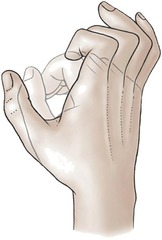New Jersey Klumpke’s Palsy Attorneys
Klumpke’s Palsy is a condition caused when a baby suffers damage to the brachial plexus nerves during birth. Also known as Klumpke’s paralysis, Klumpke’s Palsy impairs movement and control of a child’s hand and forearm. When the network of nerves known as the brachial plexus, which begins in the neck and shoulder, suffers trauma during labor and delivery, the result can be paralysis in the hand controlled by these nerves. Often, Klumpke’s Palsy is caused by birth injuries during vaginal delivery.
In many cases, obstetric malpractice during delivery is responsible for the injury that leads to Klumpke’s Palsy. If your child has been diagnosed with Klumpke’s Palsy in New Jersey, it is imperative to understand your rights and your legal options. Contact our experienced New Jersey birth injury attorneys for a free consultation about your child’s case. Simply call (866)-708-8617 or contact us online for immediate assistance.
What is Klumpke’s Palsy?
Klumpke’s Palsy results from trauma to the nerves in the brachial plexus. Since there are numerous nerves in this network, brachial plexus injuries can lead to different types of palsy. Typically, Klumpke’s Palsy is caused by damage to the nerves in the lower portion of the brachial plexus. Klumpke’s Palsy symptoms can range from mild to severe. Depending on the specific case, a child suffering from Klumpke’s Palsy may have complete paralysis of the hand and forearm, limited range of motion, decreased sensation, and/or muscle weakness.
Some children may recover from Klumpke’s palsy within a few months after birth. In more severe cases, a child will have permanent damage that causes limited mobility, weakness, or paralysis for the rest of their life. The most severe cases of Klumpke’s Palsy are marked by a “claw hand,” where the patient has permanent tightening of the wrist and fingers. A child with this condition may also have drooping of the eyelid on the opposite side of the face (known as Horner syndrome).
If the group of nerves in the upper part of the brachial plexus are damaged, this may lead to another condition known as Erb’s Palsy.
Klumpke’s Palsy Causes
The brachial plexus can be damaged in a number of ways. These nerves are particularly vulnerable to injury during stressful or prolonged vaginal deliveries. It is also common for the brachial plexus to be injured when the mother is smaller in the size and the infant is larger than average for the period of gestation. Doctors can cause damage to the brachial plexus nerves when they pull the baby too forcefully out of the birth canal. In some cases, the physician fails to respond to indications that a cesarean section is required for a safer delivery. Attempts to deliver a child vaginally during a difficult birth can lead to brachial plexus trauma.
There are four specific ways that the brachial plexus can become injured, including:
- Neuropraxia: the nerves are over-stretched by not torn
- Rupture: a nerve experiences tearing but not at the spine
- Avulsion: a nerve is severed completely from the spine
- Neuroma: a damaged nerve forms scar tissue during the healing process which prevents nerve signal transmission to the hand or forearm.
Klumpke’s Palsy Risk Factors
There are certain risk factors that increase the likelihood that a child may suffer from a brachial plexus injury resulting in Klumpke’s Palsy. It is the doctor’s responsibility to identify these factors and to take appropriate measures to alleviate the risk. Failure to recognize circumstances that may lead to Klumpke’s Palsy-related injuries may constitute medical malpractice. Some of the risk factors for Klumpke’s Palsy are as follows:
- Mother with a small pelvis
- Larger-than-average baby
- Maternal obesity
- Gestational diabetes
- Advanced maternal age
- Previous cesarean section delivery
- Breech presentation
Treatment for Klumpke’s Palsy
The specific course of treatment for Klumpke’s Palsy will depend on the severity of the injury and the specific nerves affected. Over-stretching (neuropraxia) injuries often heal without medical intervention. Approximately 88% of infants with neuropraxia brachial plexus injuries recover within 4 months, and 92 percent have mostly restored function within 12 months. In more severe cases involving nerve tears (rupture and avulsion) injuries, the child may require surgery and nerve repair procedures. If an infant experiences a nerve tear, immediate surgical intervention is necessary to prevent permanent damage.
Contact NJ Klumpke’s Paralysis Lawyers to Discuss Your Child’s Case
If your child suffers from Klumpke’s Palsy, it is highly advisable to speak with a knowledgeable birth injury lawyer about the ways in which medical malpractice may have contributed to his or her condition. If your obstetrician failed to order a cesarean section, used incorrect maneuvers during vaginal birth, made errors while using forceps or vacuum extractors, or failed to appropriate measures to prevent injury to you and your child, you may have grounds for a birth injury lawsuit. Through litigation, you can recover damages to pay for the cost of treatment and the rehabilitative care your child needs. Contact us today at (866)-708-8617 for a free consultation with a New Jersey birth injury attorney who can help.
Resources:
Klumpke paralysis, National Institutes of Health Genetic and Rare Diseases

